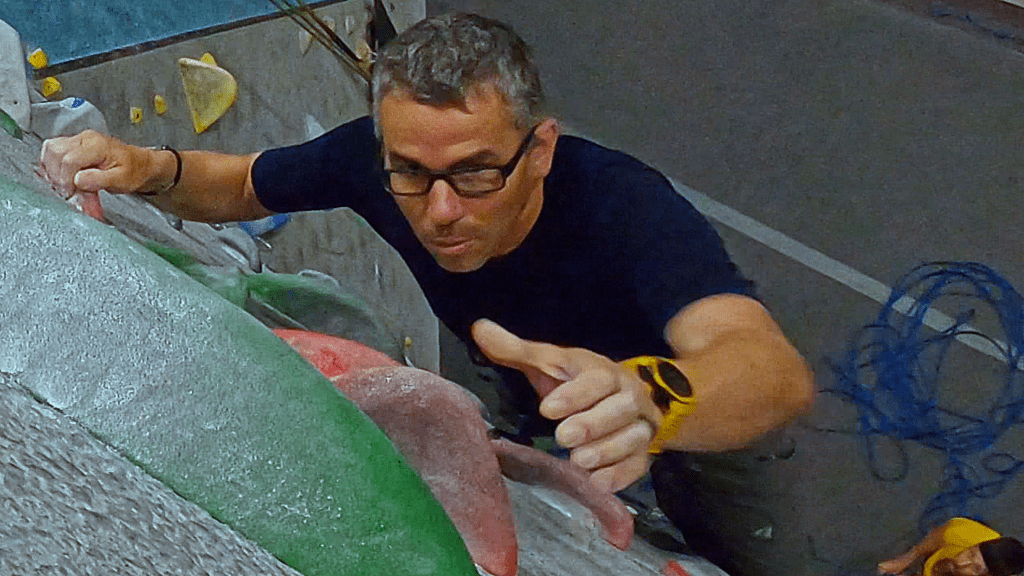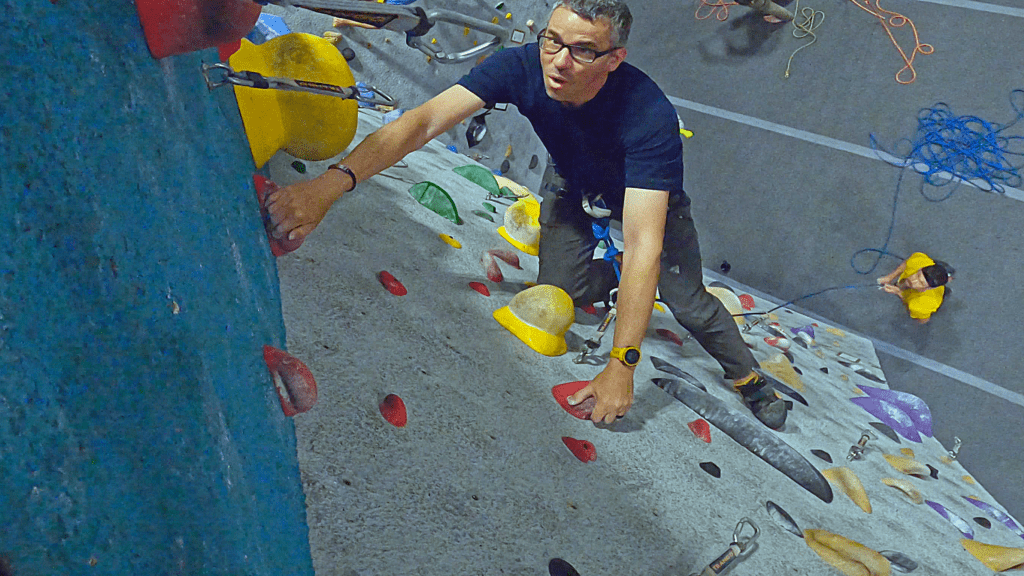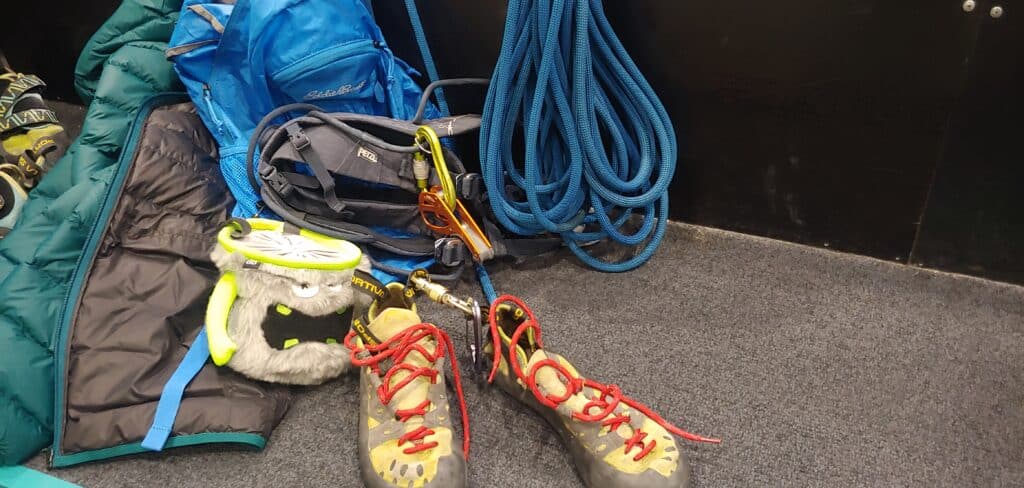Introduction
Rock Climbing is the latest sport gaining popularity. Yes, it can be dangerous, but with proper training and practice, it is a very safe sport to try. Diabetics are not left out of this exciting sport. There are just a couple of things a diabetic needs to watch out for. This is how to get started rock climbing with diabetes.

Rock Climbing and Type 1 Diabetes – What You Need to Know
Diabetes can’t stop you from rock climbing. If you are taking daily shots, put your harness on and start climbing.
If you are using an insulin pump then there are some things to watch out for. Your infusion site location may get in the way of the harness. Infusion sites on the belly will most likely get ripped off when rappelling back to the ground. It has happened to me almost every time climb with my site on my belly.
So now we have to get creative. Where are other places that have enough fat to place an infusion site without ripping it out while climbing? The back of the arm is a good place, the thighs have enough fat, and maybe on your calves.
The back of the arm location is possible but a bit tricky. Climbing sometimes involves more than just your hands and feet. Some corner climbs require additional body parts like shoulders, back, knees, and elbows. As you get better at climbing these climbs will be inviting when you see them.
The calves are possible but can also be problematic. On occasion, you may need to wrap your leg around a hold to give you a boost. I have had little problems with an infusion site on my calf. However, the tube may not be long enough to reach the pump. If you keep your pump in your pocket and the tube runs inside your pants the harness may pull on it.
Now we will discuss my setup. I keep my pump in my pocket and the infusion site on my inner thighs. Low enough that it won’t get snagged by shorts and high enough that items in my pocket don’t bump it. The pocket that gets the pump depends on which leg the site is.
How Can I Start Rock Climbing if I Have Diabetes?

There is nothing stopping you! There are climbing gyms popping up in almost every city. Find one and take an introductory course. There is of course the fear of falling. I have it, and all the pro climbers have it. Fear of heights, that’s something you will have to work through.
In the gym, there are many climbs that have a rope going to the top and back down. You tie in on one end and your belayer attaches to the other with a braking device called an ATC. While you climb the belayer takes in the rope, keeping the slack out. In the event that a fall occurs, the rope will stop you almost immediately. So fear of falling or heights is completely unfounded.
When you expand your climbing to lead climbing, where you attach the rope to the wall while you are climbing, then a bit more fear is allowed to keep you from climbing.
When you first start climbing, all the gear is rentable from the gym. If you decide climbing is something you want to pursue then you will want to buy the essentials. You will probably want to buy shoes first, after all the rental shoes are not that great and who knows the funk on people’s feet. Then a comfortable harness, chalk bag, and an ATC approved by the gym. The ATC should be an auto locker, it locks the rope automatically when a sudden pull on the climber side happens.
Now to the blood sugars, you want to make sure you have normal blood sugar when you walk into the gym. A little insulin on board is fine. Climbing is not a normal exercise. While you are climbing, undoubtedly there will be some fear that creeps in. Adrenaline will kick in and raise your blood sugar. I have had different results in blood sugar every time I climb.
No matter what, bring your glucometer, snacks, and water. You do not want to belay someone with low blood sugar. On some occasions when my blood sugar is low or high, it can affect my ability to climb or even make decent decisions.
Climbing Accommodations for People with Diabetes
To be honest, using the disability card to get preferential treatment is unfounded in this case. I can climb anything a nondiabetic can climb without special assistance. This is where you can shine. I climbed that and I am a diabetic.
Rock Climbing is the best exercise. It’s not like going to the gym and counting out reps and measuring how much weight you can lift or move. It is you, your body, and a puzzle to get to the top of the route. Are you strong enough to climb the route or do you need practice? Strength helps but technique and skill are better. Your body adjusts to the new demands you are placing on it and lean muscles can be very strong muscles.
Most climbers are not muscle-bound looking but they can climb an extreme overhang without too much struggle. You will like the changes if you climb often enough. Just remember not to crush someone’s hand in a handshake. All my friends try to crush my hand in a friendly handshake. I return the strength and hold it longer than they can.

Wrapping Up
In conclusion, I hope that you want to make a fun exercise change in your life and try something new and safe. Go to YouTube and start researching gym climbing and how to get started. I have several links below that I like the best, introductory and one very in-depth.
Generally, the climbing community is not going to judge you when you first start out. Climbing in the gym is not a competition with the other climbers. It is generally a supportive environment and if you can make a friend with some of them, you will get advice along the way. The only competition in a gym is between you and the route you are climbing. Get out there, try something new, and Diabetes Can’t Stop US.